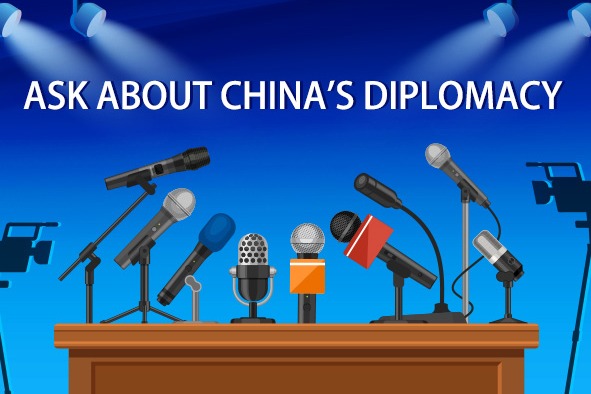Modernization agency
China has emerged as a new catalyst for the independent development of LAC countries


Unlike the endogenous modernization observed in Western countries, the modernization process in Latin America and the Caribbean has historically been influenced and constrained by external factors. This phenomenon exemplifies a typical case of exogenous modernization. Historically, Western countries, particularly the United States, have imposed their norms and values on LAC in an effort to protect their own interests. This has often included direct interventionist actions. Such measures have not only impeded the independent development of Latin American nations but also resulted in a lack of long-term developmental planning and policy continuity within the region.
For Latin American countries, the US serves as a powerful northern neighbor, sharing similar political and cultural traditions along with a profound historical influence. In contrast, China has emerged as a new partner since the 21st century, enhancing its economic presence and political influence in the region. In recent years, the US has increasingly highlighted the competitive aspects of Sino-US relations. Against the backdrop of major-power competition, the US' hegemonic intentions toward LAC are gradually resurfacing, aiming to diminish China's foothold in the region. Consequently, Latin American countries find themselves compelled to choose sides between China and the US, resulting in polarization and political conflict within the region while simultaneously undermining their autonomy and independence in modernization efforts.
With Donald Trump's return to the White House, trends in US foreign policy have garnered significant concern within LAC. From the perspective of Latin American nations, Trump's assertive stance toward China during his first term was a pivotal factor contributing to the intensification of strategic competition between China and the US. Consequently, LAC should be prepared for yet another resurrection of the Monroe Doctrine — with a real-world impact on everything from investment and technology to the region's ties with China. Furthermore, it can be anticipated that the policies of Trump's second term will inevitably exacerbate interventionism and exclusivity in US approaches toward LAC. This shift is likely to not only heighten geopolitical complexities within the region but also pose greater challenges for Latin American countries striving for national sovereignty and independent development.
In an effort to secure geopolitical advantages amid the competition among major powers, less than a month into his new term, Trump issued a warning to Panama, threatening "something very powerful" (while not ruling out military actions) should the country fail to eliminate China's influence in the interoceanic canal. In 1903, the US and Panama signed a treaty, giving the US the authority to develop and manage the Panama Canal Zone. For a century, in their quest to reclaim sovereignty over the Panama Canal, the Panamanian people have endured significant sacrifices — paying with "blood, sweat and tears". The recovery of control over the Panama Canal in 1999 marked a milestone in Panama's history and also serves as a microcosm of Latin America's exploration of independent development paths. In response to Trump's threat to "retake" the Panama Canal, Panamanian President José Raúl Mulino said: "The sovereignty of our canal is not negotiable." At the same time, the Panamanian government refuted Trump's claim that Chinese soldiers are operating on this waterway connecting the Pacific and Atlantic oceans. In addition, many Latin American countries, including Mexico, Chile, Ecuador, Peru, Costa Rica and Colombia, have voiced their support for Panama's defense of the canal's sovereignty. They also urged the international community to adhere to all agreements that ensure regional peace and stability.
In fact, Latin American countries are well-acquainted with the situations in which the US compels nations to make concessions through intimidation, inducement, and pressure. Given that the US has long engaged in a series of control and interference actions within the region, most Latin American countries currently harbor unstable expectations and lack sufficient confidence in US intentions. Consequently, the impact of the Trump administration's strategic supplementation in LAC based on the new Monroe Doctrine may be rather limited, and may instead further estrange Latin American countries from the US.
On the contrary, as Sino-Latin America relations continue to advance across various fields of cooperation, China has emerged as a new catalyst for Latin American countries to accelerate their independent development. On the one hand, through investment in infrastructure construction, China has significantly enhanced the logistics capabilities and energy self-sufficiency levels of Latin American countries. For instance, as an important cooperation project between China and Peru under the framework of the Belt and Road Initiative, the opening up of the Chancay Port has shortened the sea transportation time from Peru to China to 23 days, resulting in over 20 percent savings in logistics costs. This megaport not only fosters economic growth in Peru, but also facilitates regional economic integration.
On the other hand, Chinese trade cooperation and investment have reduced Latin American countries' dependence on European and US markets. This engagement has alleviated their debt burdens and created conditions that are conducive to economic stability and independent development.
More importantly, as a developing nation, China possesses a profound understanding of the challenges faced by Latin American countries in their pursuit of independent modernization. China is committed to sharing the values and practices associated with its own path to modernization to assist Latin American countries in enhancing their autonomous development. At the center of Global Development Initiative, development knowledge cooperation has emerged as a new avenue for fostering sustainable development within Sino-Latin American relations. With the aim of fostering common development, cooperation between China and LAC is evolving beyond traditional political and economic domains to encompass deeper and more advanced levels, including cultural exchanges, experience sharing, and mutual learning among civilizations.
Exploring cooperation in technology transfer represents one of the most significant practices within development knowledge cooperation, as outlined in the China-CELAC Joint Action Plan for Cooperation in Key Areas (2022-24). The transfer and transformation of advanced technologies from China can significantly enhance the technological capabilities and self-development potential of Latin American countries. In its economic and trade collaboration with LAC, China emphasizes technology transfer tailored to local needs, encompassing areas such as manufacturing, new energy, communications, agricultural cultivation, livestock breeding, fisheries, and agricultural product processing.
For example, agricultural technology cooperation has become a priority area for technological cooperation between China and LAC. The mechanism of the China-CELAC Ministerial Forum on Agriculture continues to evolve, with China having established bilateral agricultural cooperation frameworks with 19 countries in the region, including Argentina, Venezuela and Uruguay. China transfers agricultural technology to LAC through establishing joint research and technological innovation centers, providing funding for agricultural related scientific projects, organizing agricultural technology demonstration training courses, offering academic scholarships, and so on.
These knowledge collaborations not only enhance the autonomous development capabilities of Latin American countries but also deepen mutual understanding and trust between China and LAC, thereby injecting lasting impetus into bilateral relations.

The author is an associate professor at the Institute of International and Regional Studies and a researcher at the Center for Latin American Studies at Sun Yat-sen University. The author contributed this article to China Watch, a think tank powered by China Daily.
Contact the editor at [email protected].

































